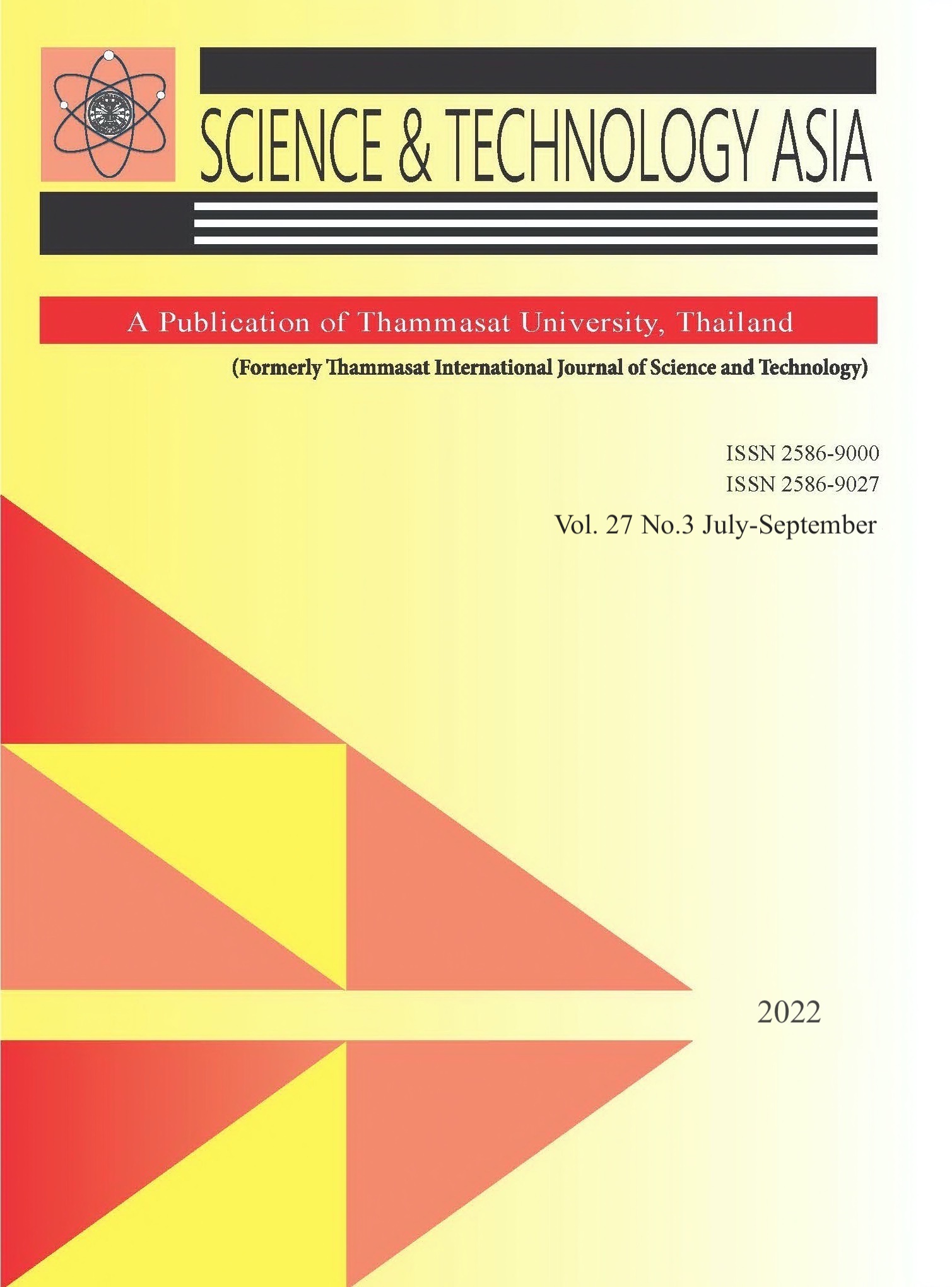Influences of Operational Parameters on Methylene Blue Degradation in the Suspension Photoreactor Using Aeroxide® P25/TiO2 as a Photocatalyst
Main Article Content
Abstract
Degradation of methylene blue (MB) by photocatalytic process and utilization of Aeroxide® P25 as a photocatalyst for purifying water have been abundantly researched. Evonik (formerly Degussa) Aeroxide® TiO2 P25 (denoted as P25), produced by flame pyrolysis of TiCl4 vapor, is a popular photocatalyst material for use as the photocatalyst reference due to its high photocatalytic efficiency. This research aims to investigate and discover the most effective operational parameters on the photocatalytic degradation of methylene blue using Aeroxide® P25 as a photocatalyst. In the experiment, the MB degradation kinetics of varying four operational parameters in heterogeneous photocatalytic system composed of the 50 mL suspension photoreactor, MB and Aeroxide® P25 were investigated by UV-Vis spectroscopy. The variable operational parameters consist of Aeroxide® P25 concentration, agitation speed, pH and light intensity. The fixed operational parameters consist of initial concentration of MB (11. 6 ± 0. 8 mg L- 1), air ambient and temperature (25 ± 1 ºC). The reductions of MB concentrations were fitted well with a pseudo- first order kinetic model, and then the apparent reaction rate constants (kapp) were reported. The correlation between the kapp values and amounts of the operational parameters was fitted to predict trends. Moreover, influence of irradiating light regions over the photocatalytic degradation was investigated. The dispersion stability of Aeroxide® P25 in water from varying pH of the suspension was also investigated for supporting the analysis of this work. The operational parameters were arranged in order of influence on MB degradation performance from using Aeroxide® P25 as a photocatalyst in the suspension photoreactor as the result: UVA light intensity > Agitation speed pH > Concentration of Aeroxide® P25. The optimal condition for operating MB photocatalytic degradation using Aeroxide® P25 as a photocatalyst in our system is MB concentration of ~12 mg L- 1, Aeroxide® P25 concentration of 4-5 g L- 1, pH 9. 2, light intensity of 412 μW cm- 2 and agitation speed of 2500 rpm.
Article Details

This work is licensed under a Creative Commons Attribution-NonCommercial-NoDerivatives 4.0 International License.


